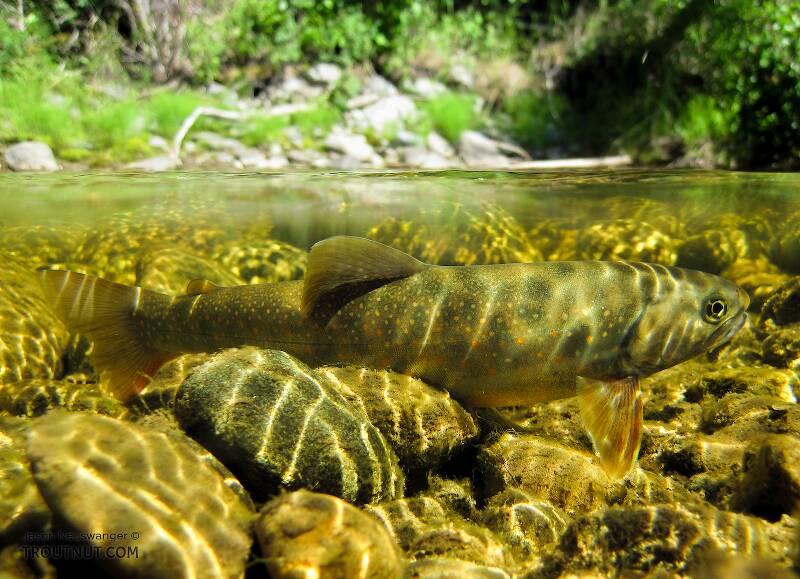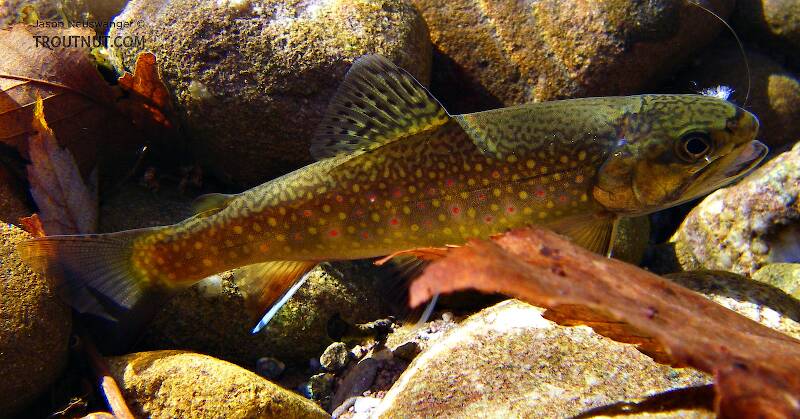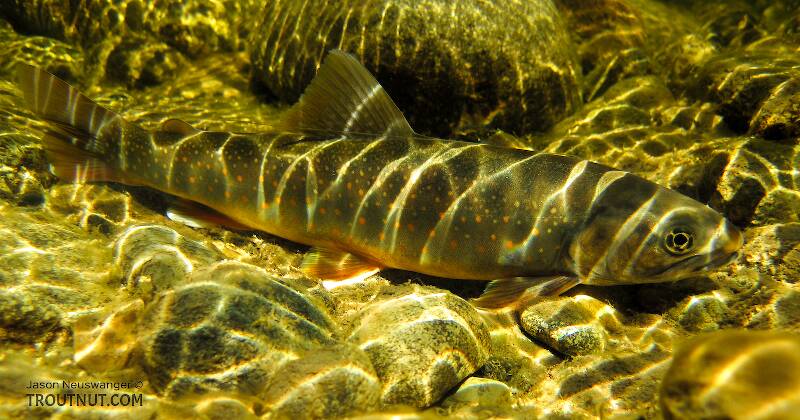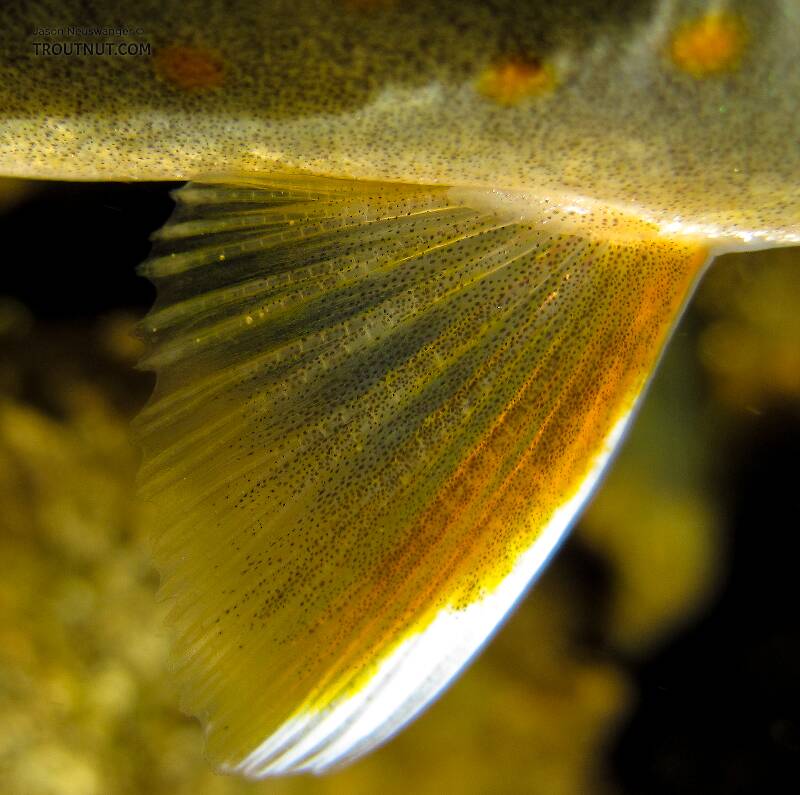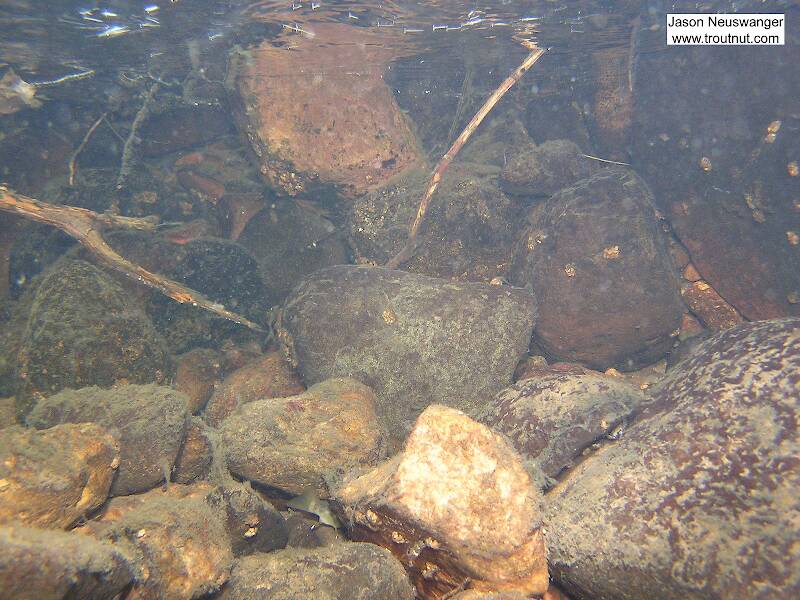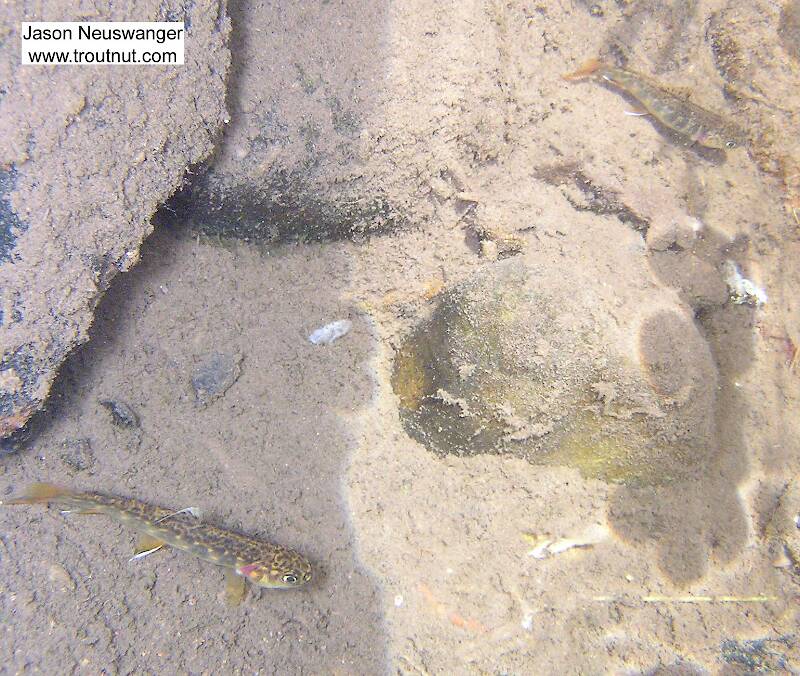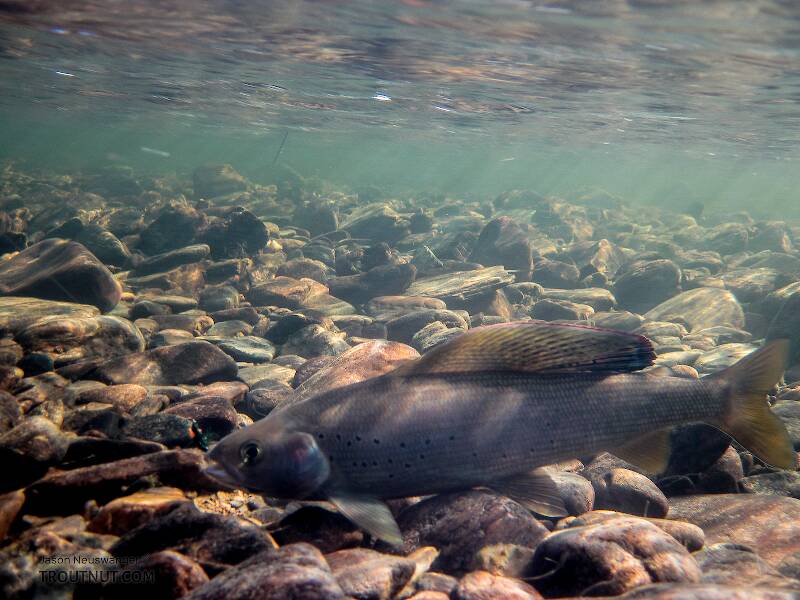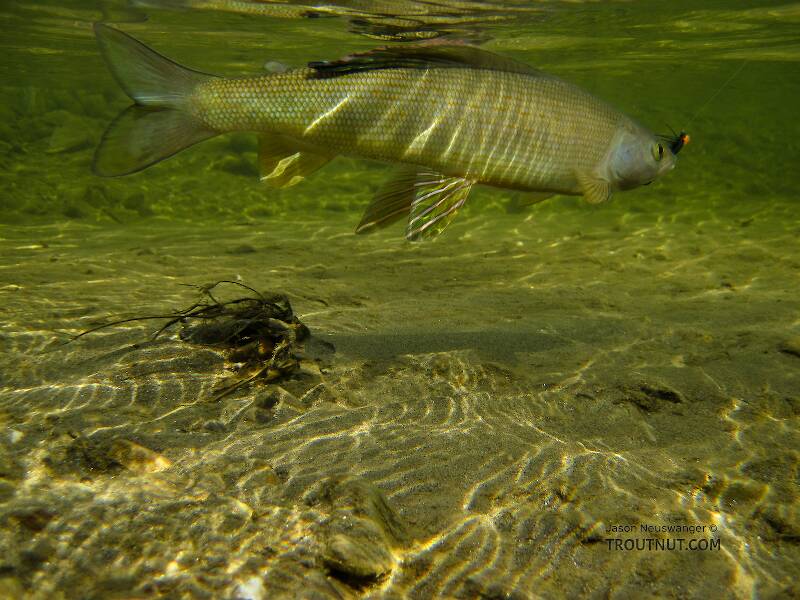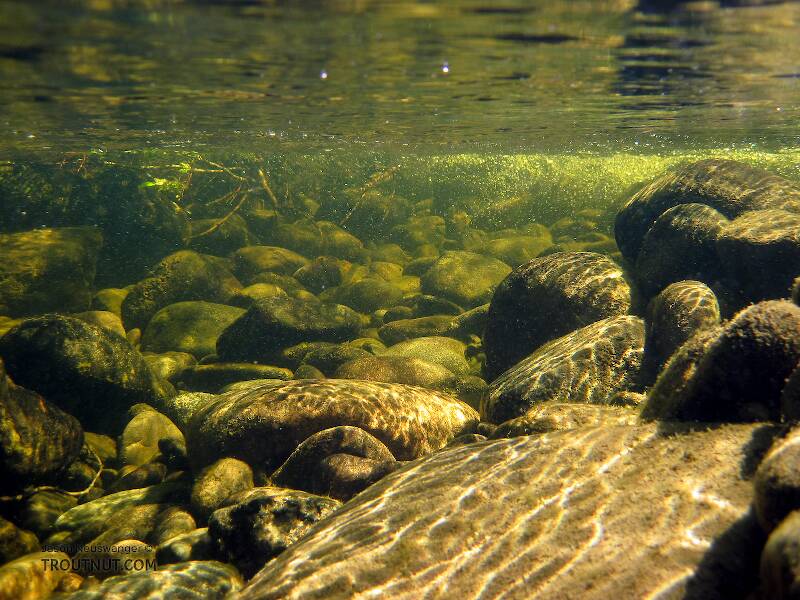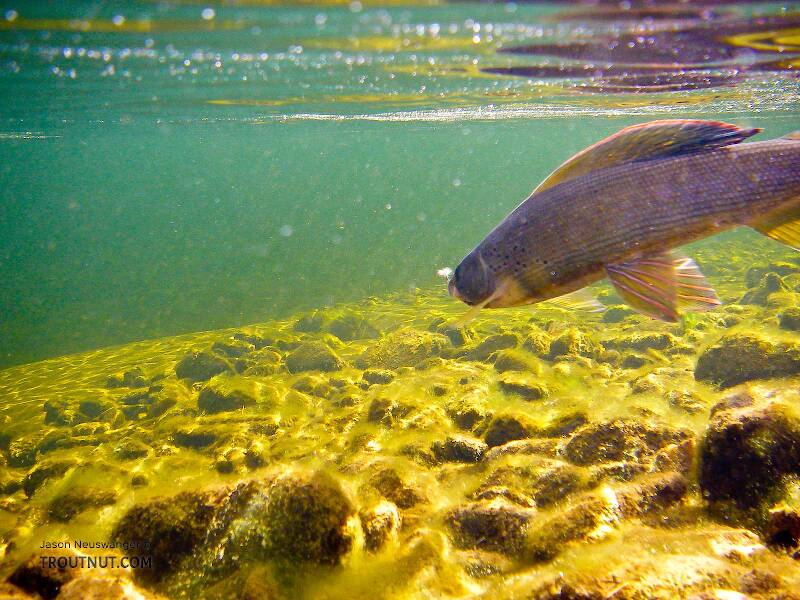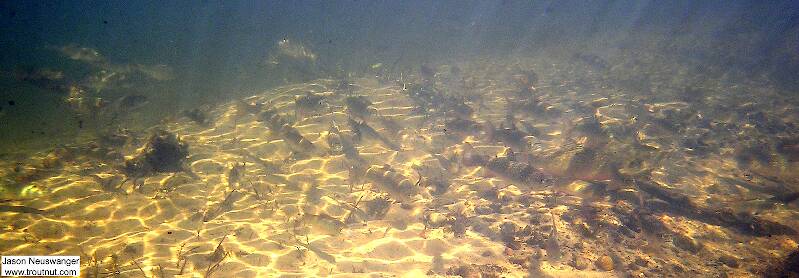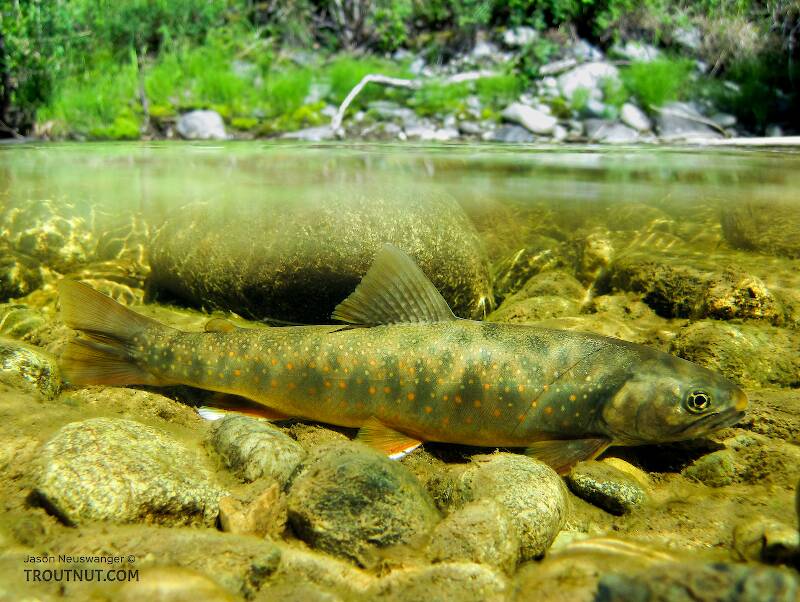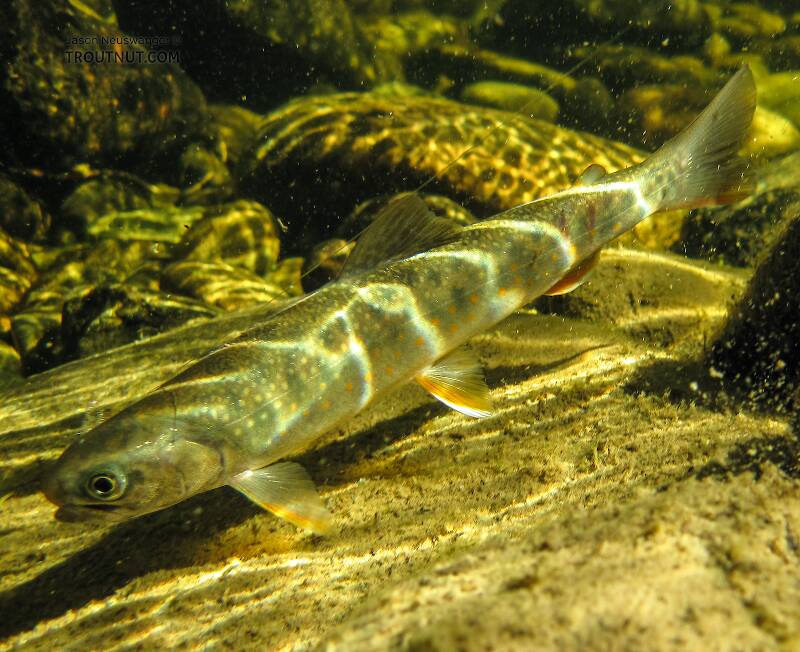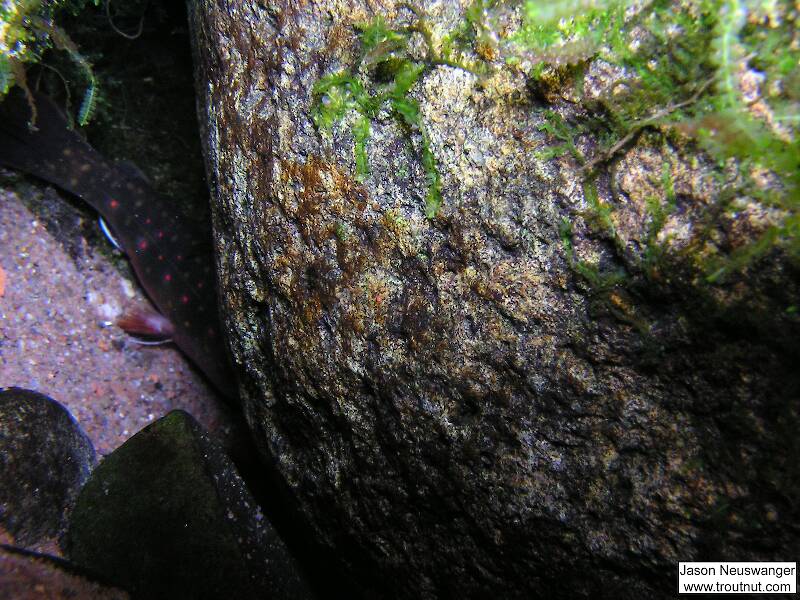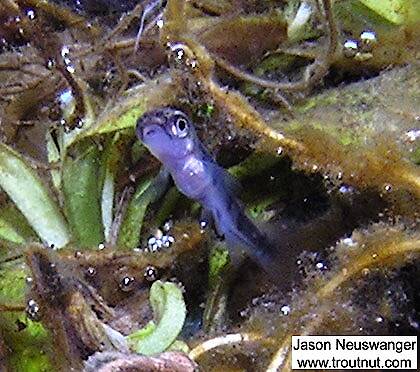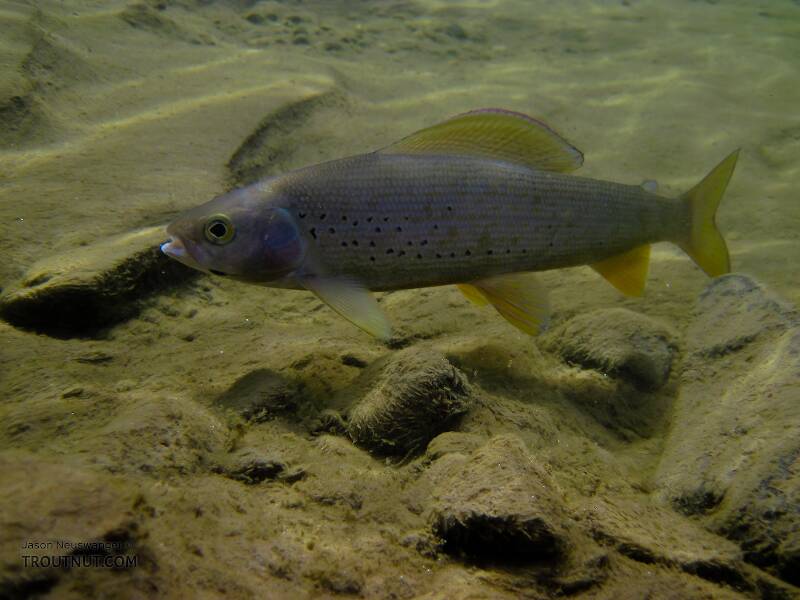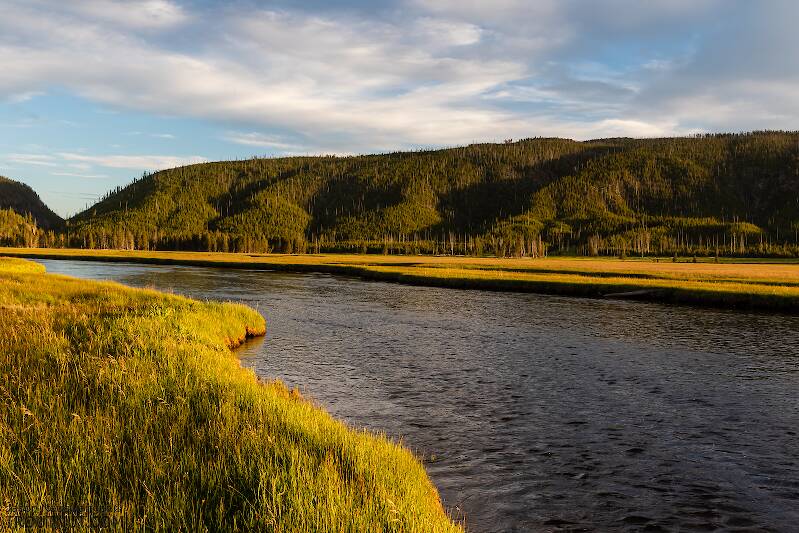
Salmonflies
Pteronarcys californica
The giant Salmonflies of the Western mountains are legendary for their proclivity to elicit consistent dry-fly action and ferocious strikes.
Featured on the forum

This specimen keys pretty easily to Onocosmoecus, and it closely resembles a specimen from Alaska which caddis expert Dave Ruiter recognized as this genus. As with that specimen, the only species in the genus documented in this area is Onocosmoecus unicolor, but Dave suggested for that specimen that there might be multiple not-yet-distinguished species under the unicolor umbrella and it would be best to stick with the genus-level ID. I'm doing the same for this one.

Troutnut is a project started in 2003 by salmonid ecologist Jason "Troutnut" Neuswanger to help anglers and
fly tyers unabashedly embrace the entomological side of the sport. Learn more about Troutnut or
support the project for an enhanced experience here.
Pictures of Trout, Salmon, and Grayling Underwater
Pictures of Trout, Salmon, and Grayling Underwater
Underwater photos of trout, salmon, and grayling — mostly from the days when I ran around with a very early waterproof camera (and the 2003 quality shows).
